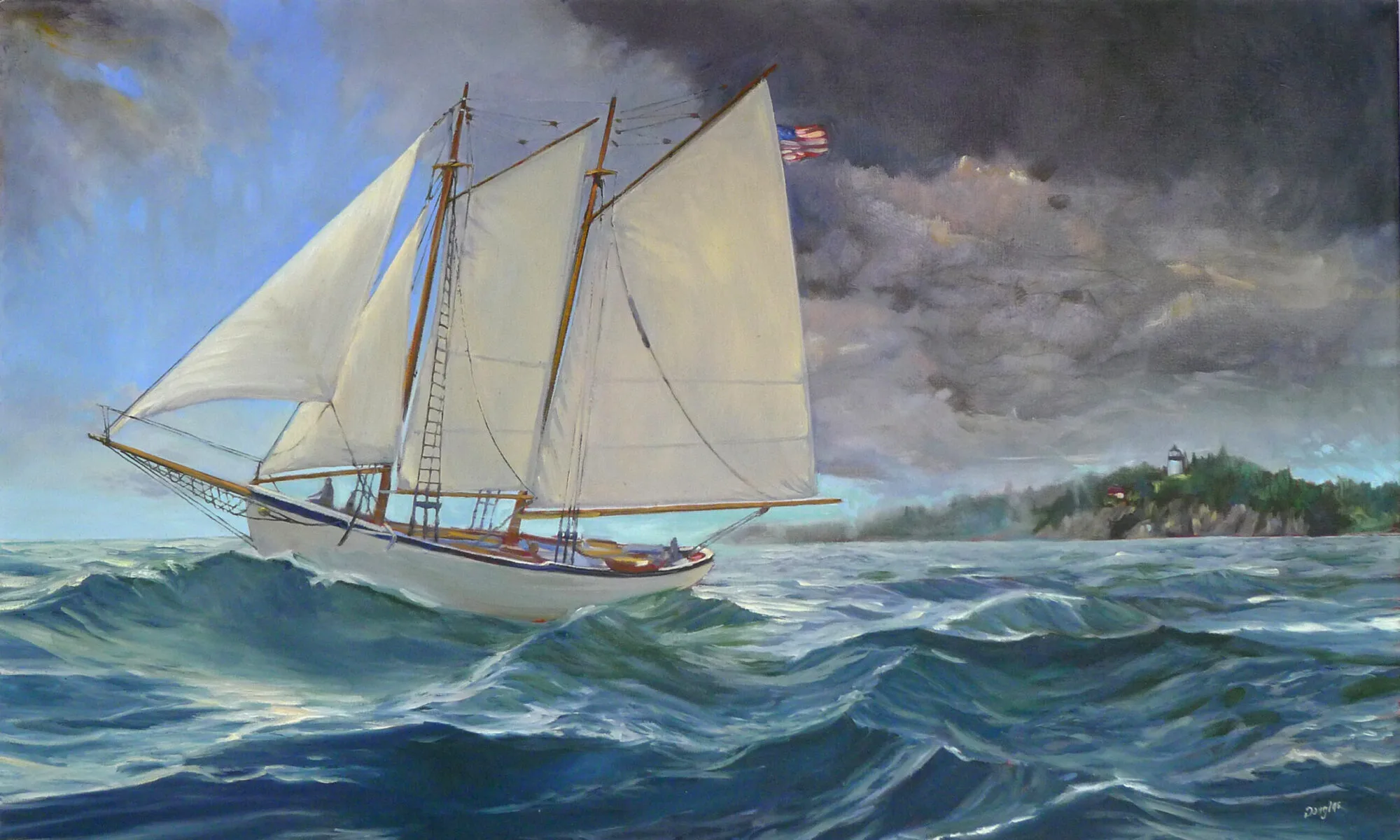Art class expands your capacity for creative thinking. No wonder we’ve cut it from school.
 |
| Sometimes it rains, by Carol L. Douglas. Available through Ocean Park Association. |
“That’s not grey,” I inevitably find myself saying on the first overcast day of a new class. “It’s a dull, desaturated blue-grey.”
The new student will stare at the subject, shrug and say, “If you say so, but I don’t see it.” And then, somewhere along the way, he’ll suddenly ‘get’ it and begin to see all the colors there are in a leaden sky.
He didn’t suddenly grow different cone cells in his eyeballs. Neuroplasticity is wonderful, but it doesn’t go that far. Rather, by practicing seeing, he exercised and developed the neural network he already had.
| Sea Fog, by Carol L. Douglas. Living in the northeast, you develop a fine sensitivity to grey. |
The idea that doing art makes you more artistic is hardly revolutionary. In other fields, we call that ‘learning’. Art is encoded in the genes the same way math is. That means that some of us will have a tendency toward art or math, but all of us benefit from studying both disciplines.
A 2014 study monitored brain growth in art students. It observed changes in prefrontal white matter that corresponded to an increase in “their ability to think divergently, model systems and processes, and use imagery,” the researchers wrote. In a matter of a few months, “prefrontal white matter reorganizes as (art students) become more able to think creatively.”
“Maybe there are gene variants that give individuals a proclivity toward art (e.g. make them more open to new ideas or more prone to make connections or see patterns), but that is a long way from saying they were born an artist and that those without such gene variants are doomed to being uncreative,” the researchers concluded. “It also propagates the strange myth of the artist as a special class of human. I hope our study will help to debunk the notion that there are ‘artists’ and ‘the rest of us.’”
| Inlet, by Carol L. Douglas. Seldom are grey skies actually devoid of color. |
My mother began a slow descent into Parkinson’s Disease about a decade ago. She was deaf and suffered from tinnitus. Trying to find a solution, I stumbled across Norman Doidge’s The Brain that Changes Itself. It talks about redundancy in brain wiring. Our auditory processing runs on parallel channels to other mental processes. What happens in one circuit affects the others. Deafness might do more than just socially isolate us. It may contribute to the failure of our brains in extreme old age.
 |
| Inlet, (watercolor) by Carol L. Douglas. There are a million ways to depict the grey skies of late autumn. |
Visual art and music are important for the young, in that they help develop creative, flexible brains. That’s why it’s so disturbing that both have been so significantly cut in schools. You’d almost think society doesn’t want kids thinking independently.
But art is also important for older people, because it helps support those creative, flexible brains. I have a Facebook friend who regularly paints with her great-grandson, age five. He’s developed into a fine young artist, and she’s working in her studio when he’s visiting.
“He is learning to focus and think on his own more,” she told me. “He is now telling me specifically what he wants to paint. That’s a far cry from pushing colors around. And his Dad tells me he colors a lot at home. He is really developing—on his own—this interest in creating with colors.
“I think it’s helping him to slow down,” she added.
More of us should follow her lead.

I have been regularly painting with my granddaughter since she was old enough to smear paint on paper with her hands. She turned eight yesterday. Our art journey together has been nothing short of amazing for both of us. I have had to learn, learn, learn in order to guide her. Last weekend we spent a day pulling monotypes. She went home with some really successful prints made with colors she mixed herself. We listen to music while working together. Our bond is strong.
My father was blind at the end of his life and developed Alzheimer's Disease. I regret that I did not play music and bring him modeling clay to work with.
Thank you for your sensitive essay.
Thank you. Stories like yours make me resolve to spend more time doing art with my own grandkids. As for regrets, I too have them but they're useless, unless we use them as a reminder to do better by future generations.
Much peace, and thank you.